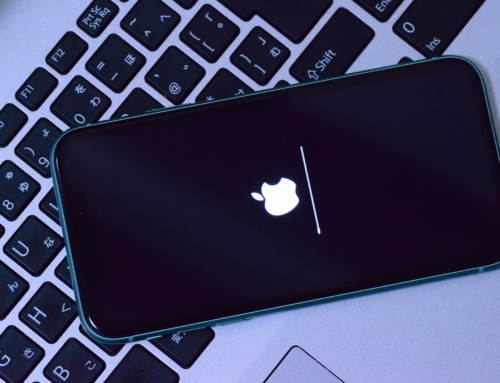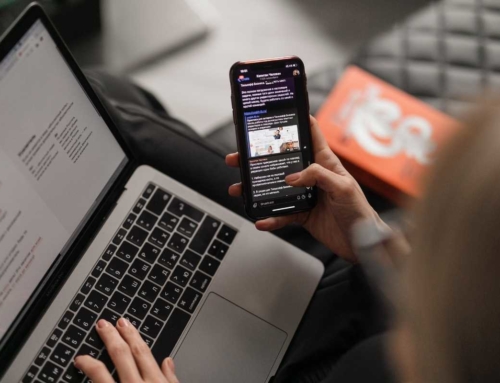A common saying that popped up in the early 2000’s was, “There’s an app for that!”
When smart devices began to release mobile apps, it really felt like no matter what you needed to get done, there was some sort of tool to help, conveniently on your phone (or iPod Touch if we want to go back even further). While it seems that the sky’s the limit in terms of apps, there are still plenty of gaps that can be filled with new mobile app ideas.
Nearly 90% of time we spend on mobile Internet involves using apps. With the amount of time people spend online increasing year by year, mobile app development is a hot career path.
Whether you’re developing an app for your company or just making one for your own personal enjoyment, it’s important to know the mobile app lifecycle.
7 Most Important Steps When Creating a Mobile App
Step 1: Market Research
What is it that makes your app special? This is an important question to consider, especially since there are currently 3.48 million apps on the Google Play Store and 2.22 million apps featured on the Apple App Store. Before jumping into the rigorous design and coding process that comes with launching a mobile app, you need to first figure out if it’s something the market actually needs by doing research.
This process essentially involves asking questions about the market and how your product fits into that market. What niche does your app fill? Who are your competitors? What makes your app better than theirs?
Let’s say, for example, that you want to build an exercise app that allows users to track their progress. Maybe you want to have a step counter as well as use location settings so users can map out their routes. What you first need to do is research the top exercise apps that do that exact same thing and see what they do well by reading reviews or testing the app itself. That way you can see where they excel and where their pain points are.
Plus, looking at all these apps will help you narrow down your niche so that your app doesn’t just fade into the background of the thousands of fitness apps. Do any of them track the amount of sunlight you get when exercising? Is there an exercise app for dogs? By seeing what’s already out in the market, you can hone your own ideas for when you start designing your mobile app.
Step 2: Decide what tools you want to use
Many developers use either Swift or Objective-C when creating a mobile app for iOS. As the name implies, Swift is faster in terms of performance and uses less code, but is a newer program that needs to be updated frequently. If your project is more complex, you might find that Objective-C would be the better fit.
If you want a programming language that will help you create both iOS and Android apps, you can also look into JavaScript, Java, C++, or Python as possible coding tools.
Step 3: Create the User Interface and Experience
Now it’s time to start figuring out how you want your app to look, feel, and most importantly, flow. Using coding tools like the ones mentioned above, you can create pages, menus, logins, and everything else that users need to navigate in an app.
To continue with the earlier example of the exercise app, there needs to be a page where users can view their maps, which then needs to be connected to some sort of satellite or other location services. You also need a page where users can look at the number of steps they’ve taken, which must then be connected to some sort of motion sensor on the mobile device. What’s more, users need to be able to look at past data to see if they are progressing, meaning that data needs to be stored in some sort of database. These are all the different possibilities to take into account when using software development tools.
In order to create a seamless user experience, the navigation between pages needs to be intuitive and all links need to be functioning properly. If a button says, “click here to view maps” then it had better take the user to the map page.
Step 4: Quality Assurance Testing
Throughout the app-building process, it’s important to test new features as you develop them. Then, once the app has been developed, it’s time to test, test, and test it again until you’re sure that everything runs smoothly. Broken links or unreadable text are surefire ways to get one-star ratings in the Apple or Google Play Stores.
Not only that, but you’ll want to proofread all of the text you’ve written for your app. Users will not trust an app that is riddled with spelling or grammar mistakes.
If you’re developing a mobile app independently and not through your company, it might be a good idea to get a few friends or family members to check out the app and give you feedback. Extra sets of eyes may be able to pick up on mistakes or bugs that you didn’t catch.
Step 5: Market
Even if you aren’t trying to launch the next Instagram or Tik Tok, you still want the app you worked so hard on to get noticed, which is where marketing comes into play.
The marketing process for your mobile app can start even before your launch date. The very first thing you should do is have a “story pitch.” This is how you explain to consumers what we talked about in step one – what makes your app unique? If you are trying to get a media company to write a story about your app, you’ll need to pitch to their editors why your app is newsworthy and relevant to their audience. For your fitness app, you may want to research blogs or publications that focus on exercising and health whose readers would be interested to hear about a new, revolutionary app.
Another way to get more bang for your buck when it comes to advertising campaigns is to partner with influencers. In a survey conducted by Rakuten Marketing they found that out of 3,600 online shoppers worldwide, 80% have bought a product that was recommended by an influencer. Much like pitching to a publication, there needs to be some sort of alignment of incentives with the influencer, and you’ll need a story about your product to entice them to try your app and promote it to their followers. You could even add a discount code or link under their name to make it mutually beneficial for the influencer and your app.
You should also have a website associated with your app that has your story and mission statement, as well as a link to download it. Make sure that it is up and running and has been through Quality Assurance testing.
Then, you can start to build up the hype for your mobile app by crafting dedicated social media pages to create brand recognition and further engage your user community. In fact, one survey of marketers found that the No. 1 motivation behind their ad campaigns is brand recognition.
Step 6: Get it in the App Stores
Before you submit to either the App Store or Google Play Store, take the time to make sure that your app meets programming and legal criteria. Take the time to read through the stores’ policies carefully. Last year on the App Store alone, 150k apps were rejected for failing to meet Apple’s privacy policies.
Once you’re sure that your app meets all technical and legal requirements, you will need to create an info page for your app. This is where you get to tell your audience about all the different features your app offers and why they need to download it. This is also where you will display the logo for the app, as well as some screenshots of the user interface to excite potential customers.
You’ll also want to supply the App Store with other useful metadata about what category the app falls under, the recommended age range, and what language options are available.
Step 7: Continue to update
Even after an app is officially launched, big companies are constantly improving their products. Users sometimes find errors and bugs that slipped past Quality Assurance testing, so developers are always releasing various updates and bug fixes.
You will also want to keep an eye on your Key Performance Indicators (KPIs) and the retention rate of your app’s users. According to a study done by Adjust, the average retention rate for an app is 26% the first day after a user downloads it and drops another 14-15% one week after downloading.
One way to boost engagement is to send fun push notifications announcing updates. In fact, one study found that push notifications with emojis on them lead to an 85% increase in open rates.
Plus, you may think of more features based on customer feedback or your own experience. Maybe you decide that your exercise app should not only map your route and number of steps you’re taking, but also include a feature where you track how fast the user is moving.
Mobile apps are the future of online communication, commerce, and entertainment. Learn how you can turn your app idea into a reality through Woz U’s online course in Mobile Application Development offered exclusively by learning delivery partner Southern Careers Institute.

Maria Rotelli
Maria Rotelli is a Los Angeles-based writer who is currently the Editorial Lead at ENTITY Academy. She holds a Bachelor’s Degree in psychology from Clark University and a Master’s Degree in journalism from Emerson College.





